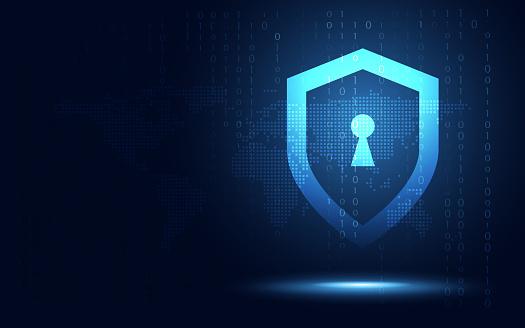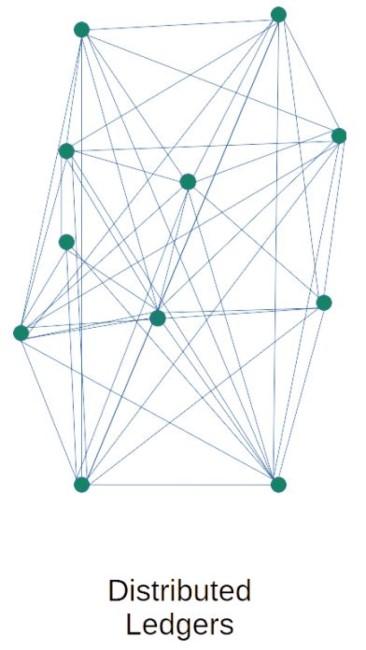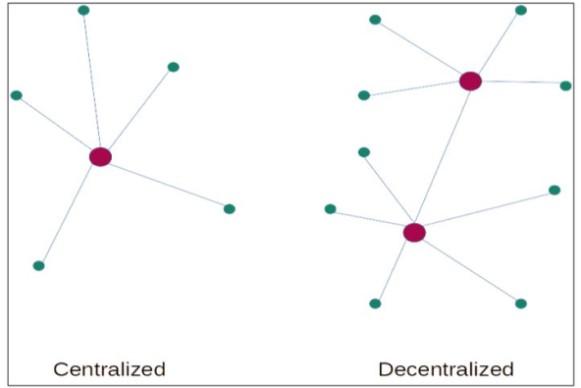President
- FMA
- The Fabricator
- FABTECH
- Canadian Metalworking
Categories
- Additive Manufacturing
- Aluminum Welding
- Arc Welding
- Assembly and Joining
- Automation and Robotics
- Bending and Forming
- Consumables
- Cutting and Weld Prep
- Electric Vehicles
- En Español
- Finishing
- Hydroforming
- Laser Cutting
- Laser Welding
- Machining
- Manufacturing Software
- Materials Handling
- Metals/Materials
- Oxyfuel Cutting
- Plasma Cutting
- Power Tools
- Punching and Other Holemaking
- Roll Forming
- Safety
- Sawing
- Shearing
- Shop Management
- Testing and Measuring
- Tube and Pipe Fabrication
- Tube and Pipe Production
- Waterjet Cutting
Industry Directory
Webcasts
Podcasts
FAB 40
Advertise
Subscribe
Account Login
Search
The promises and risks of blockchain technology for manufacturers
Understanding blockchain’s potential to improve industry supply chains—and potential pitfalls
- By Bill Frahm
- April 14, 2022
- Article
- Manufacturing Software

Blockchain technology is hyped as a means to deliver more efficient and protected supply chain collaboration, but manufacturers should consider some of the risks associated with this advanced transactional platform. Shutter2U/iStock/Getty Images
Blockchain technology offers manufacturers the opportunity to improve supply chain collaboration and service supplier management. It’s most suitable for relationships in which several parties to have make decisions from the same information. But while it can be a valuable addition to your technology inventory, you need to approach it with your eyes open.
What Is Blockchain?
At its most fundamental, blockchain is a ledger system that records events and distributes each event across the network. A ledger exists at each node in the network. Each event is distributed to each node in the network.
The technology can create smart contracts, which are routines that execute a transaction—pay a party, send a notification, or publish a document—when pre-established conditions are met.
How Does It Work?
Many current networks operate as a centralized or decentralized architecture. Under a centralized architecture, a single server processes transactions for several clients. A decentralized architecture balances the processing load among several servers that handle processing for client computers.
Blockchain works under a distributed architecture, with all users and entities working on an interconnected network. Each user or entity is linked to other users and entities rather than a centralized server system. As a result, information is distributed among all users.
The basic components of a blockchain network are:
- Node—a user or computer within the blockchain.
- Transaction—an event that is the smallest building block of a blockchain system.
- Block—a data structure used to keep a set of transactions that are distributed to all nodes in the network.
- Chain—a sequence of blocks in a specific order.
- Miners—specific nodes that verify the integrity of the block.
- Consensus—a set of rules and arrangements to carry out blockchain operations.
Benefits of Blockchain in Manufacturing
Arguably, the greatest benefit offered by blockchain technology is that the distributed ledger is transparent to all users on the network. This reduces the opportunity for dispute among interested parties. Misinformation during regular operations can be avoided if the block is properly administered.
Widespread availability of information supports timely issue resolution. Smart contracts enable the update of information when defined conditions are met.
Logistics provides an ideal set of functions for blockchain. Blockchain excels at showing the origin of an item, ownership, and its current status. A blockchain application can track a supplied component from the supplier’s shipping location, through shipping suppliers and locations, to the customer’s receiving dock.
Adding GPS and RFID location tracking provides the ability to share the current location of the product, supports delivery estimates, and offers proof of shipping and delivery.

Blockchain works under a distributed architecture, with all users and entities working on an interconnected network.
Risks of Blockchain
The biggest risk in blockchain today is the amount of ambiguity and misinformation spread in the market. While blockchain offers advantages to manufacturers who need robust shared information, it does come with risks. Depending on your requirements and capabilities, these risks can be deal-breakers for companies unprepared to tackle them.
Inherent Inefficiency. Blockchain’s distributed architecture is a highly inefficient way to manage and maintain information. Cryptocurrency and blockchain are notorious for outrageous energy requirements. Also, the time required to authorize transactions and add blocks makes response time significantly greater than traditional applications.
Inaccurate Security Promises. “The whole point of using a blockchain is to let people—in particular, people who don’t trust one another—share valuable data in a secure, tamperproof way. That’s because blockchains store data using sophisticated math and innovative software rules that are extremely difficult for attackers to manipulate. But the security of even the best-designed blockchain systems can fail in places where the fancy math and software rules come into contact with humans, who are skilled cheaters, in the real world, where things can get messy.” (MIT Technology Review, “How secure is blockchain really?”)
Assertions about blockchain security are optimistic, at best. We already know that cryptocurrencies are hackable. If cryptographic tools aren’t implemented properly, your blocks can be easily exposed and subject to misuse. It is known that malicious actors can subvert blockchain with complex algorithms that occupy the application on other events.
Keep in mind that blockchain applications don’t exist in a vacuum. In today’s interconnected world, you can expect your app to have interfaces to your ERP system, finance system, and production management system. Given the interfaces, blockchain is no more secure than its weakest link. And preventing bad actors from subverting the system and maintaining the security of application interfaces are equally as important with blockchain as with any other implementation.
Cautious Optimism
Blockchain technologies offer wonderful opportunities to share trusted information across organizations. The way transactions are collected, authorized, and stored provides a cross-functional transparency not available with traditional applications.
But there are real risks and costs. No application is completely secure from malicious actors or unsecure interfaces. Be aware that scalability is an issue and the same attention should be paid to security and integrity as with any application project.
About the Author

Bill Frahm
P.O. Box 71191
Rochester Hills, MI 48307
248-506-5873
subscribe now

The Fabricator is North America's leading magazine for the metal forming and fabricating industry. The magazine delivers the news, technical articles, and case histories that enable fabricators to do their jobs more efficiently. The Fabricator has served the industry since 1970.
start your free subscription- Stay connected from anywhere

Easily access valuable industry resources now with full access to the digital edition of The Fabricator.

Easily access valuable industry resources now with full access to the digital edition of The Welder.

Easily access valuable industry resources now with full access to the digital edition of The Tube and Pipe Journal.
- Podcasting
- Podcast:
- The Fabricator Podcast
- Published:
- 04/16/2024
- Running Time:
- 63:29
In this episode of The Fabricator Podcast, Caleb Chamberlain, co-founder and CEO of OSH Cut, discusses his company’s...
- Trending Articles
Tips for creating sheet metal tubes with perforations

JM Steel triples capacity for solar energy projects at Pennsylvania facility

Are two heads better than one in fiber laser cutting?

Supporting the metal fabricating industry through FMA

Omco Solar opens second Alabama manufacturing facility

- Industry Events
16th Annual Safety Conference
- April 30 - May 1, 2024
- Elgin,
Pipe and Tube Conference
- May 21 - 22, 2024
- Omaha, NE
World-Class Roll Forming Workshop
- June 5 - 6, 2024
- Louisville, KY
Advanced Laser Application Workshop
- June 25 - 27, 2024
- Novi, MI



























